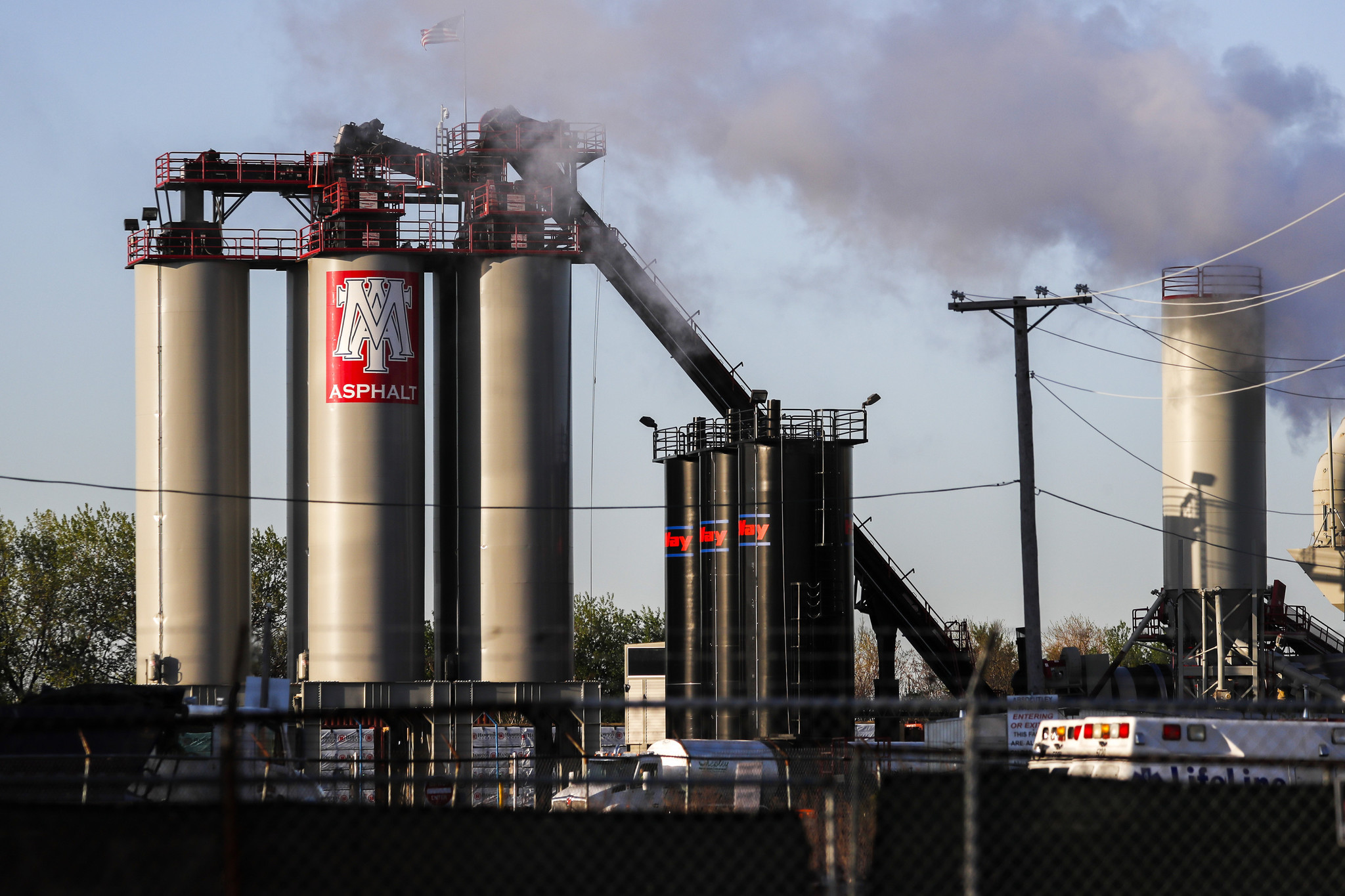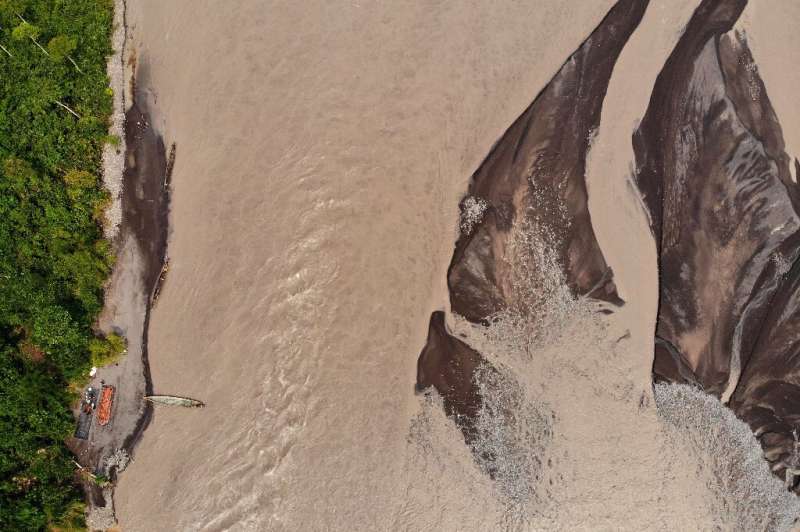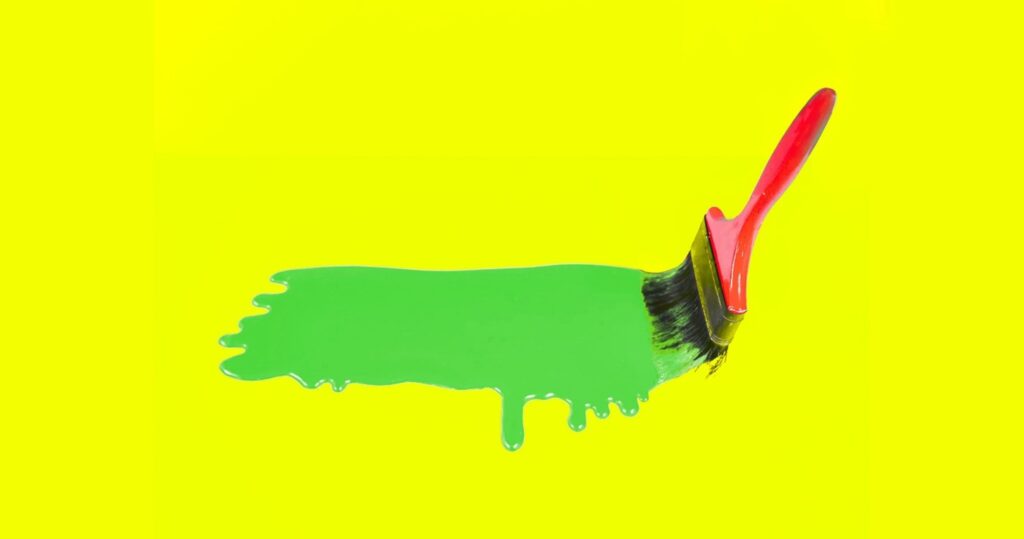Author: CHEJ Intern

By Stephen Lester
Pretty regularly, CHEJ gets asked to prepare an analysis of the health risks posed by a contaminated site or a particular proposal. Not too long ago, we got an unusual request that is worth sharing. The request came from an African American community who were using a unique tactic to fight a proposed asphalt plant. Yes, they were concerned about the health risks posed by the proposed asphalt plant, but they were also concerned as a predominately African American community that they were already highly vulnerable because of the many health problems people had. Combined with the risks posed by COVID-19, the pollution coming from the asphalt would simply be too much, or so they argued.
This struck me as a terrific strategy for this community to make the case against the asphalt plant. In the letter CHEJ wrote, we made clear that asphalt plants are known to release toxic chemicals and fumes which can cause severe health problems including cancer, nervous system dysfunction, and liver damage. In particular, asphalt plants release small particulate matter (PM) that gets into the lungs and bloodstream. This can worsen pre-existing lung diseases and even causes lung disease, heart disease, and lung cancer. Such serious, lifelong health effects were reason enough to oppose an asphalt plant. But when the people exposed are highly vulnerable to this pollution, these risks are even greater.
It’s been shown that Black people bear a disproportionate amount of the health and economic burden from PM-emitting facilities in the United States. Partly because of this disproportionate burden, Black people excessively suffer from many of the respiratory conditions caused or worsened by PM. For instance, the American Lung Association in 2018 reported that Black Americans were 42% more likely than White Americans to have asthma. We wrote that racial disparities in conditions worsened by particulate matter are even more concerning during the COVID-19 pandemic. The Centers for Disease Control (CDC) lists many respiratory conditions implicated by PM, such as asthma and chronic lung disease, as risk factors for COVID-19. This means it is an especially dangerous time to introduce air pollution into Black communities due to the added risk of developing COVID-19.
At the time, evidence was growing that COVID-19 was disproportionately affecting Black and Latinx Americans. As early as April 2020, it was observed that Black people were dying from COVID-19 at higher rates than white people. While through the end of May, data showed that Black and Latinx people were three times as likely to become infected with COVID-19 and twice as likely to die from it. This staggering reality underscores how the racialized health disparities in the US have been exacerbated during the pandemic.
Particulate matter in the air causes health risks, and these risks are disproportionately shouldered by Black people. Both facts are exacerbated by the COVID-19 pandemic, making it clear that an asphalt plant emitting particulate matter would pose an unacceptable risk of disease and death to the surrounding community. CHEJ’s letter concluded that, based on scientific and public health evidence, a new asphalt plant will likely have devastating health effects on the neighborhood and community. So far, the community has succeeded in stopping the asphalt plant.
Contact CHEJ about our capacity to evaluate health risks in your community.

By Nicholas Williams
A large oil spill occurred on Friday, January 28th, 2022 after a downpour led to a mudslide in eastern Napo Province in Ecuador. A large boulder struck an oil pipeline causing approximately 6,300 barrels, or 264,600 gallons, of crude oil to spill from this major pipeline into the Cayambe-Coca National Park. Within this park lies the Coca River which is one of Ecuador’s biggest tributaries to the Amazon River. This prominent river was coated with oil along a significant portion of its banks. The water within the Coca River is vital to many wildlife species and native people who call the riverbank home. Many of these riverside villages house the indigenous population within the region. Crude oil is toxic to ingest for both people and animals, and with the main water source being contaminated, those who depend on this river as a source of drinking water will need to rely on outside aid. This devastating result led to loss of livestock for riverbank dwellers along with foul smelling fumes that came from their water source.
The oil leak was initially reported by the owners of the pipeline, OCPEcuador, a private oil company. OCPEcuador owns the 485-kilometer oil pipe (approx. 301 miles) that pumps 160,000 barrels of crude oil daily out of oil reservoirs within the jungle. OCPEcuador also reported that the cleanup efforts resulted in recovery of 5,300 barrels of oil. The company claimed that they will spare no expense to comply with all financial remediations along with clean up responsibility. Ideally this is the case; however, it is unlikely that the ramifications of this spill will be solved in the short term. Hopefully, OCPEcuador’s readiness to take responsibility for this incident will continue into the future and includes the assurance of drinking water delivery and all attempts to rectify irreversible damage caused by oil contamination in both the near and long term.
Is It Green or Greenwashed?
WASHINGTON — Americans like to think they are recycling their plastic takeout food containers, cutlery and flimsy grocery bags when they toss them into those green or blue bins. But, too often, that waste is shipped overseas, sometimes with the help of organized crime groups, where it litters cities, clogs waterways or is burned, filling the air with toxic chemicals.
A report published Monday by the independent Swiss research group Global Initiative Against Transnational Organized Crime, whose members include current and former law-enforcement officials, sheds new light on how this waste winds up in poorer countries that had agreed not to accept it.
Read more…
Photo credit: Shashank Bengali/Los Angeles Times
By Briana Villaverde, Community Organizing Intern
According to the EPA, people of color are disproportionately affected by air pollutants and are exposed at a higher rate. I have lived this statistic, fought it firsthand, and have been propelled by it into the world of environmental advocacy. My hometown, Paramount, California, is in the nation’s most Latino congressional district (CA-40). For a small city of only 4.8 square miles, it contains an overwhelming amount of metal and heavy industrial activity. This is my story of becoming an “accidental environmentalist.”
In 2016, Paramount residents rallied to stop a medical waste facility from being built in the city. This culminated in a demonstration at the city’s annual Apples with Santa Clause distribution where adults and children held signs that read, “Dear Santa, We Want Clean Air.” At the time, I was the president of my high school’s Green Club, where we focused on more basic environmentalism such as recycling and planting trees. This instance was a huge turning point for me and my understanding of organizing/environmental advocacy and that it went beyond mainstream conservationist rhetoric.

Image credit: Paramount Community Coalition Against Toxics
In 2017, I officially joined the organizing efforts with other Paramount residents to hold metal forging companies accountable for their willful polluting. Due to the volume of metal forging companies in the city and their process for treating metal at a commercial scale, many residents were experiencing irritation in their nose, throats, and lungs, as well as smelling strong metallic odors throughout the day. Children near these sites also reported shortness of breath and irritability from the odor. Community leaders filed a class action lawsuit against 8 of the prominent polluting industries in our city, but they were met with great pushbacks from electeds, other community members, and governmental agencies. We had short-lived wins when the South Coast Quality Air Management District forced companies to temporarily shut down operations that emitted hexavalent chromium, but they quickly started back up again with more “monitoring.” What this really meant was that they would increase operations at night when particulate matter was low. Additionally, our council members’ revolving door with the city’s members of the chamber of commerce left community members and myself in a constant state of disbelief with how money flowed between the city officials and these polluting companies.

Image credit: Paramount Community Coalition Against Toxics
After graduating from high school, I pursued this passion academically, majoring in Environmental Science and Policy with a minor in Chicano Latino studies at the University of California Irvine. I have interned and volunteered with natural resource management agencies and climate justice advocacy groups with my story as a grounding experience. Initially, I had set out with the intention of fighting for my community’s right to clean air and a safe environment, because that’s what I thought being an environmentalist essentially entailed. However, this path from lived experience to becoming a full-fledged and dedicated organizer is a common one that people, like me, will continue to walk. With the emergence of powerful climate justice organizations like the Sunrise Movement, Uplift, and SustainUS, I meet more and more young people of color with similar stories like mine. Their communities are also suffering from adverse health effects brought on by environmental racism and lack of corporate accountability – which leaves us with one strong choice, to become strong environmentalists. After a lot of struggles I realized that there was a shift in what I considered the role of an environmentalist – it was the love I have for my community and our right to a livable future that made me an “accidental environmentalist.”
Cover photo credit: Long Beach Press Telegram
Wednesday, November 10th from 10am to 11:30 am
Session II: Making Change and Moving Mountains: When Mothers Discover Their Children’s Health is at Risk
This session provides a snapshot of the experiences of three women and the actions they took when they discovered their children and families were sickened by exposures; contaminated drinking water, polluted air, and land that was an unknown dumping ground for toxic waste. This group of unintended advocates explain how and why they became leaders in their communities and how they organized their neighbors for change. A pediatrician, environmental health researcher, and Mom, joins the panel as co-moderator.
Hope Grosse, Co-Founder, Buxmont Coalition for Safe Water, National PFAS Contamination Coalition -Leadership Team
Luella Kenny, Love Canal Homeowners Association, researcher and community organizer
Melissa Miles, Executive Director, New Jersey Environmental Justice Alliance
Co-Moderators: Kerry Margaret Butch, Community Engagement Coordinator, Rutgers Center for Environmental Exposures and Disease; Maida Galvez, MD, MPH, Pediatrician and Professor, Icahn School of Medicine at Mount Sinai
Register here: https://rutgers.zoom.us/webinar/register/WN_nHJNWiR_R0W8XpqxMO3tgw

